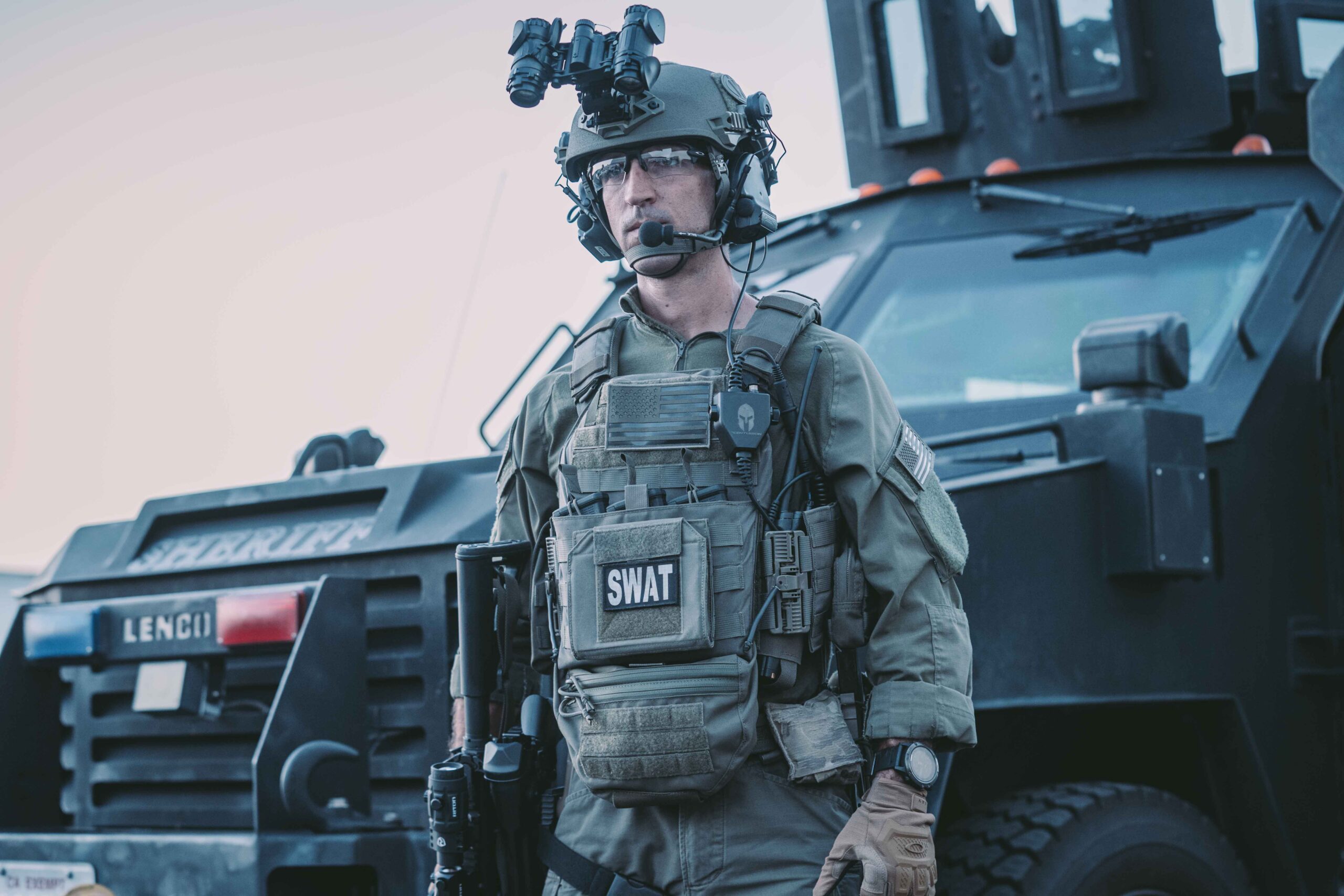Effective Communication Tools for Counterterrorism

As the world becomes more complex and interconnected, terrorism poses a threat across borders, ideologies, and technologies. Counterterrorism is no longer solely carried out through military actions or intelligence collection; strong communication has become a foundational pillar in preventing, reacting to, and diminishing terrorist threats.
This blog examines the most effective communication tools for counterterrorism, their operational mechanisms, and why they are more crucial now than ever. Secure your radio with the Chase Tactical Multi-Platform Radio Pouch!
Why Communication is Important in Counterterrorism
Before diving into the tools in counter terrorism, it’s important to understand why communication plays such a vital role in counterterrorism strategies:
- Real-time information sharing helps detect threats early.
- Multilateral cooperation ensures a coordinated global response.
- Community engagement helps prevent radicalization.
- Crisis communication minimizes panic during attacks.
- Disinformation management counters terrorist propaganda.
- Each of these aspects depends on the effective use of communication tools across digital, traditional, and interpersonal platforms.
Effective Communication Methods for Counterterrorism
Contemporary counterterrorism efforts depend on cross-cutting communication platforms for secure messaging, public notification systems, live surveillance coordination, and social outreach tools. Let’s examine the most efficient means of communication being used around the globe.
1. Secure Messaging and Collaboration Platforms
Secure messaging among police, intelligence, and military groups is fundamental. Channels such as Signal, Wickr, and Threema Work enable end-to-end encrypted chats and file transfers among permitted users. These apps are relied on for their high-grade encryption and privacy controls so that sensitive matters remain secure and tamper-proof.
Government-approved versions of business software, such as Microsoft Teams and Slack, with compliant settings, are also commonly utilized for internal coordination. They facilitate incident coordination, task assignment, and real-time updates during tactical operations, all while ensuring data security is not compromised.
2. Integrated Command and Control Systems
In active operations, agencies rely on command and control systems that consolidate information from multiple sources into a unified view of operations. Such platforms combine live CCTV feeds, aerial imagery from drones, GPS data, and intelligence reports.
Tools such as Palantir Gotham and IBM i2 offer real-time mapping, pattern analysis, and team coordination. They enable commanders to make quick, informed decisions based on a unified view of the threat landscape. Having such systems integrated ensures that all parties involved—ranging from field agents to national security leaders—are aligned.
3. Social Media Monitoring and Threat Analysis

Terrorist groups now function more and more in the virtual world, employing social media to recruit, indoctrinate, and orchestrate attacks. Social listening platforms based on artificial intelligence are monitoring conversation methods on several platforms. They identify indicators of extremist intentions, indicate suspicious activity, and follow digital trails.
Social surveillance not only prevents attacks but also contributes to breaking up online propaganda networks. In some cases, monitoring has identified lone-wolf attackers before they act by examining their online activities.
4. Public Alert and Crisis Communication Systems
In the event of an imminent or ongoing attack, authorities must warn the public without causing panic. New emergency alert systems aim to provide specific instructions directly to individuals’ devices.
Wireless Emergency Alerts (WEA), the Emergency Alert System (EAS), and localized SMS broadcasts are used to alert civilians to lockdowns, evacuation instructions, or suspicious behavior. Solutions like Everbridge enhance this function with geolocation-based targeting and machine language translation, providing unambiguous messaging across diverse populations.
Transparency during a crisis is crucial for managing disinformation, alleviating fear, and facilitating orderly responses.
5. Community Engagement and Counter-Radicalization Tools
One of the most effective counter-terror tools is community trust. Authorities utilize dedicated platforms to communicate directly with at-risk communities and offer incentives for reporting suspicious activity. These initiatives help detect potential radicalization earlier on and offer alternatives to vulnerable individuals, thus preserving their welfare.
Applications that provide citizens with access to their local police, such as neighborhood watch groups or applications like Citizen, promote anonymous reporting and two-way communication. Counter-narrative campaigns, many of which are disseminated through YouTube, Facebook, and Instagram, are developed to challenge and debunk extremist narratives through authentic community voices.
Two-way SMS applications and surveys enable agencies to gauge public sentiment, address complaints, and foster cooperation with religious and civic leaders.
6. Translation and Language Processing Tools
Due to the global nature of terrorism, language differences can make it difficult to share intelligence and assess threats. Artificial intelligence (AI) translation software, including SYSTRAN (used by NATO), Microsoft Translator, and Google’s Cloud Translation API, enables security organizations to instantly scan, translate, and interpret across various languages.
The software does more than just word translation, employing natural language processing (NLP) to detect nuances, colloquialisms, and code language, which are essential for sensing threats hidden in regular language.
Apart from real-time translation, some systems also offer speech-to-text transcription, which enables the analysis of intercepted calls and video messages used in terrorist propaganda.
7. International Intelligence-Sharing Networks
Terrorist conspiracies tend to go across borders, necessitating worldwide cooperation. Secure communication platforms, such as INTERPOL’s I-24/7 and EUROPOL’s SIENA, enable the sharing of sensitive information across borders.
These networks facilitate concerted investigations by exchanging information on suspects, money movements, weapons shipments, and travel history. By consolidating data from several countries, they enhance worldwide situational awareness and prevent any country from operating in isolation.
Such systems are critical to multinational alliances, such as the Five Eyes Intelligence Alliance, whose functioning is based on secure, seamless communications for monitoring and countering cross-border terrorism.
8. Cyber Threat Intelligence and Monitoring Platforms
Cyber-terrorism is also an emerging threat. Terrorists use digital infrastructure to hack into systems, disable services, or spread fear. Cyber Threat Intelligence (CTI) frameworks like MISP and Recorded Future help law enforcement agencies monitor malware, phishing campaigns, and emerging cyber threats.
These platforms are integrated with broader security ecosystems, raising flags for signs of compromise and facilitating proactive defense. Cybersecurity teams within the military, government, and commercial environments use CTI to detect, respond to, and recover from cyberattacks quickly and accurately.
9. Simulation and Training Environments

No communication device is effective without training. Agencies today employ virtual simulations and augmented reality to practice emergency responses. These platforms enable teams to practice harmonized communication in high-pressure situations, like hostage situations, bomb threats, or coordinated attacks.
Training simulations make sure response protocols are fully understood and communication is clear, even under extreme pressure. They also enable weaknesses in systems or strategies to be identified before a real event takes place.
Conclusion
In counterterrorism, clear communication is not an option—it’s a requirement. From secure messaging apps to international intelligence-sharing platforms, the technologies we use to exchange information can make all the difference between threats being disarmed on time or escalating to have devastating consequences.
Arming agencies with the finest communication infrastructure, training them intensively, and continually evolving in response to new threats keeps us resilient. As terrorist strategies change, so do ours for connection, coordination, and cooperation.
Frequently Asked Questions
What is public communication’s role in a terrorist attack?
Public communication ensures that citizens receive accurate information during an attack, keeping them safe, adhering to official directives, and preventing panic.
How do officials track online terrorist activities?
Agencies utilize AI-based tools to monitor keywords, networks, and suspicious activity on social media, forums, and messaging apps, enabling them to identify potential threats early.
Why is global communication critical in countering terrorism?
Terrorism tends to be transnational. Global communication enables various nations to exchange information, coordinate actions, and respond more quickly to threats.

